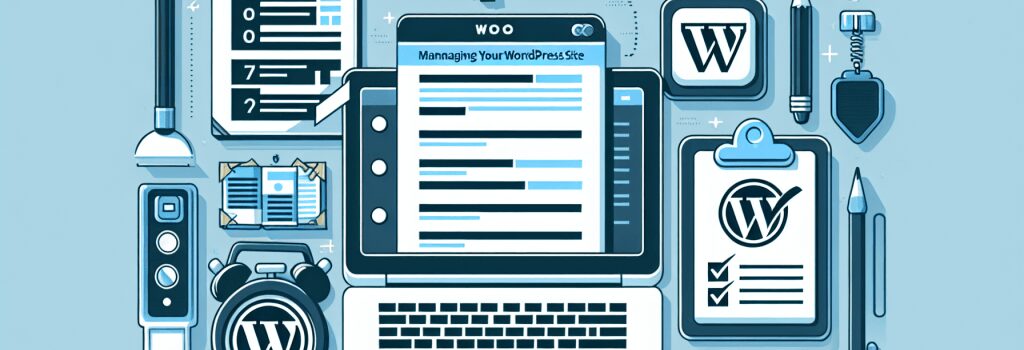Managing Your WordPress Site: Tips and Best Practices

Understanding WordPress Management
WordPress stands out as a powerful Content Management System (CMS) that powers a significant portion of the web. Whether you’re running a blog, a business site, or a portfolio, knowing how to effectively manage your WordPress site can vastly improve its performance, security, and user experience. This guide aims to cover some essential tips and best practices for WordPress management.
1. Keep Your WordPress Site Updated
Updates are a critical aspect of WordPress management. They not only introduce new features but also fix bugs and patch security vulnerabilities.
Regularly Update Themes and Plugins
Keeping your themes and plugins updated is just as crucial as updating the core WordPress software. Developers frequently release updates to patch security issues, add new features, and improve performance.
2. Optimize Performance
A fast-loading website improves user experience and helps with search engine rankings.
Use a Caching Plugin
Caching can significantly improve your site’s loading times. WordPress offers several caching plugins that can help you handle the load efficiently.
Optimize Images
Large images can slow down your website. Use image optimization tools to reduce file sizes without compromising quality.
3. Implement Strong Security Measures
WordPress sites are often targets for hackers. Implementing tight security measures can protect your site from malicious attacks.
Use a Security Plugin
A good security plugin can help defend against common threats like brute force attacks and malware.
Regularly Back Up Your Site
Regular backups can be a lifesaver in case of data loss or hacking. Ensure you have a reliable backup solution in place.
4. SEO Optimization
Search Engine Optimization (SEO) is vital for increasing your site’s visibility.
Use an SEO Plugin
An SEO plugin can guide you in optimizing your content and improving your site’s ranking on search engines.
Optimize Your Site’s Structure
Ensure your site has a logical structure with proper use of headings, meta tags, and sitemaps for better indexing by search engines.
5. Engage With Your Audience
Interacting with your visitors can help build a community around your site.
Enable Comments
Enable comments on your blog posts to encourage feedback and discussions. Be sure to monitor and moderate comments to keep spam at bay.
Use Social Media
Promote your WordPress site on social media platforms to drive traffic and engage with a broader audience.
Conclusion
Managing your WordPress site effectively requires diligence and ongoing effort. By keeping your site updated, optimizing its performance, implementing strong security measures, improving SEO, and engaging with your audience, you can ensure your WordPress site not only runs smoothly but also grows in popularity. Stay proactive in your site’s maintenance, and you’ll be rewarded with a robust, secure, and high-performing website.


